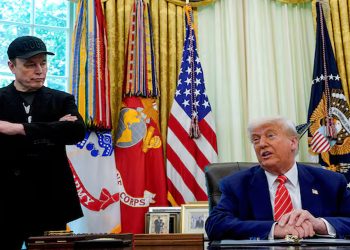In fiscal year 2024, U.S. arms exports reached an all-time high of $318.7 billion, marking a 29% increase over the previous year, according to the U.S. Department of State. This surge in sales underscores the growing global demand for U.S. military equipment, with the U.S. continuing to dominate the global arms trade.
Arms sales are primarily conducted through two channels: direct commercial sales (DCS) and foreign military sales (FMS). In direct commercial sales, foreign governments negotiate agreements directly with U.S. defense contractors, while foreign military sales involve transactions facilitated by the U.S. Department of Defense, both requiring U.S. government approval.
In 2024, direct commercial sales surged from $157.5 billion to $200.8 billion, while foreign military sales rose from $80.9 billion to $117.9 billion. These sales play a crucial role in U.S. foreign policy, with arms transfers used as tools to influence global security dynamics and long-term international relationships.
Global conflicts, particularly the Russia-Ukraine war and tensions in Gaza, have further fueled demand for military hardware. These ongoing crises have significantly benefited U.S. arms manufacturers, who have seen a substantial rise in sales due to international military engagements. According to the Stockholm International Peace Research Institute (SIPRI), the world’s top 100 arms manufacturers collectively sold $632 billion worth of military equipment in 2024. Of that total, U.S. companies accounted for half, or $317 billion, making them the dominant players in the global arms market. China ranked second, with arms sales reaching $130 billion.
In addition to the economic implications, the sale of weapons often carries political consequences. Recently, China imposed sanctions on ten U.S. defense companies, including Lockheed Martin, General Dynamics, and Raytheon subsidiaries, in response to U.S. arms sales to Taiwan. These sanctions, which restrict the companies’ ability to operate in China and freeze their assets, reflect the ongoing tension between Beijing and Washington over Taiwan. China views Taiwan as a breakaway province and opposes any foreign military support to the island.
Furthermore, China placed 28 U.S. entities, including major defense contractors like Boeing and Lockheed Martin, on its export control list, barring them from receiving dual-use technologies. This move is seen as part of China’s broader strategy to protect its national security and uphold international agreements, such as nuclear non-proliferation.
In another significant move, China sanctioned seven U.S. military industrial companies, including a Boeing subsidiary, Insitu, in retaliation for U.S. military aid to Taiwan. These sanctions coincide with the Biden administration’s decision to allocate substantial defense aid to Taiwan, further escalating tensions between the U.S. and China over the future of the island.
As global arms trade continues to grow, the economic and political ramifications of these transactions are becoming increasingly intertwined, particularly as international conflicts shape demand for military equipment. The U.S. remains a key player in this complex global landscape, navigating both the geopolitical and economic impacts of its arms exports.

































